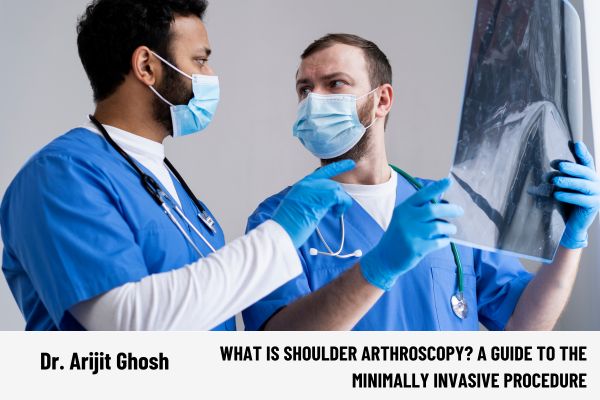What is Shoulder Arthroscopy? A Guide to the Minimally Invasive Procedure
Shoulder arthroscopy is a revolutionary procedure that allows doctors to treat shoulder joint issues with minimal disruption to surrounding tissues. It involves the use of a small camera, called an arthroscope, which is inserted through tiny incisions in the skin. This tool provides a high-definition view of the inside of the shoulder joint, allowing the surgeon to make precise diagnoses and perform repairs without needing large incisions.
How Shoulder Arthroscopy Works
Shoulder arthroscopy is typically performed under general anesthesia or regional anesthesia. The surgeon makes small incisions (about the size of a buttonhole) near the shoulder joint. Through one of these incisions, the arthroscope is inserted to examine the joint, and through the others, specialized instruments are used to treat the problem. The camera sends real-time images to a monitor, guiding the surgeon throughout the procedure.
This technique can be used to treat a variety of shoulder conditions, including:
- Rotator cuff tears
- Shoulder impingement syndrome
- Labral tears
- Arthritis
- Frozen shoulder
- Shoulder instability
Advantages of Shoulder Arthroscopy
- Minimally Invasive: With only a few small incisions, the procedure is much less invasive than traditional open surgery, leading to less tissue damage.
- Quicker Recovery: Patients generally experience a faster recovery compared to open surgery, with less pain and swelling post-surgery.
- Reduced Risk of Infection: The smaller incisions lower the risk of infection and other complications.
- Less Scarring: Because the incisions are small, the scars are minimal, making for a more aesthetically pleasing result.
- Outpatient Procedure: In many cases, shoulder arthroscopy can be done on an outpatient basis, allowing patients to go home the same day.
Conditions Treated with Shoulder Arthroscopy
Shoulder arthroscopy can address a wide range of conditions that affect the shoulder joint, such as:
- Rotator Cuff Injuries: This is one of the most common conditions treated by arthroscopy. The procedure can help repair tears in the tendons of the rotator cuff, reducing pain and restoring function.
- Labral Tears: A tear in the cartilage that stabilizes the shoulder joint can be repaired using arthroscopy, improving shoulder strength and flexibility.
- Shoulder Impingement: If the tendons or bursa in the shoulder become pinched, arthroscopy can be used to remove or smooth the structures causing the impingement.
- Frozen Shoulder (Adhesive Capsulitis): Arthroscopic surgery can be used to release tight shoulder tissue, restoring movement and reducing pain.
What to Expect After Shoulder Arthroscopy
After the procedure, most patients experience less pain and swelling compared to traditional surgery. While recovery times vary based on the complexity of the surgery, most patients can return to normal activities within 6 weeks, with full recovery taking up to 3 to 6 months for more complex cases.
Patients are often prescribed physical therapy to help restore strength and range of motion in the shoulder joint. It’s important to follow the surgeon’s post-operative instructions and attend follow-up appointments to ensure optimal recovery.
Is Shoulder Arthroscopy Right for You?
If you’re experiencing persistent shoulder pain, limited mobility, or difficulty performing everyday tasks, shoulder arthroscopy may be an ideal solution for you. Consult with an orthopedic specialist who can evaluate your condition and determine whether this minimally invasive procedure is right for your specific needs.
Shoulder arthroscopy has transformed the way doctors treat shoulder issues, offering patients a faster, less painful, and more effective recovery process. By using advanced technology and surgical techniques, it provides a high level of precision and reduces the risk of complications, making it a leading option for many individuals with shoulder problems.
